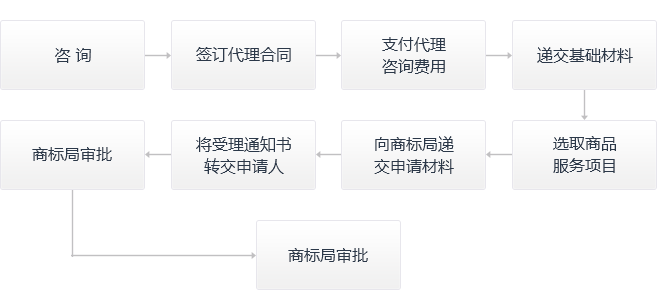Service GuideService GuidePatent Application ProcessPatent Application ProcessPatents and their rolePatents and their roleA patent is the exclusive right of the patentee to implement his invention-creation according to law. The patentee has the right to stop imitation, plagiarism, promise to sell, sell, use and other infringing acts and obtain compensation; thus, they can obtain commercial competitive advantages and monopolize the market within a certain period of time. Applying for a patent is a necessary procedure for obtaining patent rights. To obtain a patent right, the applicant shall file an application with the Patent Office of the State Intellectual Property Office, which shall be examined and approved by the Patent Office and a certificate shall be issued. When filing a patent application with the Patent Office, the applicant should submit complete application documents, including the request, description, drawings, abstract and claims. Patent rights granted by a country in accordance with its patent laws are valid only within the jurisdiction of that country and have no effect in other countries. type of patenttype of patentInvention: A new technical solution proposed for a product, method or its improvement; Utility model: a new technical solution suitable for practical use proposed for the shape, structure or combination of the product; Appearance design: A new design that is aesthetically pleasing and suitable for industrial applications, based on the shape, pattern or combination of the product and the combination of color, shape and pattern. Application dateApplication dateThe patent filing date is a term used in patent regulations, and the filing date is counted from the date when the patent application documents are submitted to the Patent Office of the State Intellectual Property Office. If the application documents are mailed, the date of the postmark is the date of application. Conditions for granting patent rightsConditions for granting patent rightsInvention and utility model patents should have "three characteristics" at the same time: Novelty: the technical solution was not known to the public before the date of application; Creativity: the invention has substantial features and progress; Practicality: The invention-creation can be manufactured or used with positive effects. Design patents should not belong to existing designs, and should be significantly different from the combination of existing design features. Application NumberApplication NumberApplication number: When the patent applicant submits a patent application to the Patent Office of the State Intellectual Property Office, the Patent Office will issue a notice of acceptance of the patent application and give the patent application number. Patent number: The patent number is the number given when the patent right is granted (the same as the application number in my country), which is a kind of document number. The document number is the serial number prepared by each industrial property office when publishing patent documents (including public publication and copying only for reading). Term of patent rightTerm of patent rightThe term of invention patent is 20 years; the term of utility model and design is 10 years (both calculated from the filing date). Determination of the Scope of Patent ProtectionDetermination of the Scope of Patent ProtectionThe scope of protection of the patent right for invention or utility model shall be subject to the content of the claims; The protection scope of the design patent right is subject to the design of the product shown in the picture or photo. Ways to resolve patent disputesWays to resolve patent disputes1. File a lawsuit in a court of competent jurisdiction; 2. Request mediation from the patent management authority; 3. The parties negotiate and resolve the matter. Under what circumstances does a patented invention-creation not lose its noveltyUnder what circumstances does a patented invention-creation not lose its noveltyThe invention-creation for which a patent is applied for shall not lose its novelty if it falls under any of the following circumstances within six months before the filing date: 1. It is exhibited for the first time at an international exhibition sponsored or recognized by the Chinese government; 2. First published at a prescribed academic conference or technical conference; 3. Others disclose their contents without the consent of the applicant. Applications for which it is expressly stipulated in the Patent Law that no patent right shall be granted1. Scientific discoveries; 2. Rules and methods of intellectual activity; 3. Diagnosis and treatment of diseases; 4. Animal and plant species; 5. Substances obtained by nuclear transformation; 6. Designs that mainly play a role in identifying the patterns, colors or the combination of the two of the printed matter. For the production methods of the products listed in item 4 of the preceding paragraph, patents may be granted in accordance with the provisions of this Law. In addition, inventions and creations that violate national laws, social morals or hinder public interests shall not be granted patent rights. The difference between service invention and non-service inventionThe difference between service invention and non-service inventionInventions and creations accomplished by performing the tasks of the unit or mainly using the material and technical conditions of the unit belong to the service invention-creation, and the right to apply for a patent belongs to the unit; if it is not performing the tasks of the unit or mainly utilizing the material conditions of the unit The completed invention-creation is a non-service invention-creation, and the right to apply for a patent belongs to the inventor or designer. Rewards to inventors (designers) for service inventionsRewards to inventors (designers) for service inventionsThe unit that has been granted the patent right and the inventor and designer agree according to their agreement. If not stipulated, within the validity period of the patent right, after the implementation of the invention-creation patent, no less than 2% shall be drawn from the operating profit of the implementation of the invention or utility model patent or from the operating profit of the implementation of the design patent. Withdrawing no less than 0.2% shall be given to the inventor or designer as remuneration, or a one-time remuneration shall be given to the inventor or designer with reference to the above ratio; if the unit that has been granted a patent right permits other units or individuals to implement its patent, it shall No less than 10% of the royalties will be withdrawn and given to the inventor or designer as remuneration. How to apply for a patent and how to write relevant documentsHow to apply for a patent and how to write relevant documentsTo apply for a patent for invention or utility model, documents such as a request, description, drawings, abstract and claims shall be submitted. The written request shall state the name of the invention or utility model, the name of the inventor or designer, the name or title, address of the applicant, and other matters. The description shall give a clear and complete description of the invention or utility model, which shall be realized by those skilled in the technical field; when necessary, there shall be attached drawings. The abstract shall briefly describe the technical points of the invention or utility model. The claims shall be based on the description, indicating the scope of patent protection required. To apply for a design patent, a written request, pictures or photos of the design, a brief description and other documents shall be submitted, and the product using the design and the category to which it belongs shall be indicated. Under what circumstances does a patent right terminate early before the term expiresUnder what circumstances does a patent right terminate early before the term expiresIn one of the following circumstances, the patent right shall be terminated in advance before the expiration of the term. 1. Failure to pay the annual fee in accordance with the regulations; 2. The patentee renounces the patent right by a written statement. The termination of the patent right shall be registered and announced by the Patent Office. Genetic resourcesGenetic resourcesThe term “genetic resources” as mentioned in the Patent Law refers to materials obtained from the human body, animals, plants or microorganisms that contain functional units of heredity and have actual or potential value; the term “inventions and creations accomplished by relying on genetic resources” as mentioned in the Patent Law refers to the use of genetic resources. Inventions and creations completed by hereditary function. Patent Cooperation TreatyPatent Cooperation TreatyPatent Cooperation Treaty in English Patent Cooperation Treaty, referred to as PCT, the Patent Cooperation Treaty is an international cooperation treaty in the field of patents. The PCT is not an "international patent", and the task and responsibility for granting patents remains the sole responsibility of the patent offices or bodies exercising their competence (designated offices) in the respective countries seeking patent protection. Trademark Application ProcessTrademark Application ProcessTrademarkTrademarkTrademark: A mark used to identify the source of goods or services. The trademark applied for registration shall have distinctive features for easy identification, that is, the combination of words, graphics, letters, numbers, three-dimensional signs and colors used in the trademark and the combination of the above elements shall be distinctive. Types of registered trademarksTypes of registered trademarksTrademarks of commodities: marks used by producers or operators of commodities to distinguish their commodities from those of others. Service mark: A mark used by a provider of a service to distinguish its own services from those of others. Collective Mark: A sign indicating the user's membership in the registered organization. Certification mark: A mark that certifies the origin, raw materials, manufacturing methods, quality or other specific qualities of the goods or services. Term of registered trademarkTerm of registered trademarkA registered trademark is valid for 10 years from the date of approval of the registration. If the validity period expires and needs to be continued to be used, an application for renewal of the registration shall be made within six months before the expiration of the period, and the validity period of each renewal registration shall be 10 years. CopyrightCopyrightCopyright: also known as copyright, is the exclusive right of citizens, legal persons or unincorporated units to their own works of literature, art, natural science, engineering technology and other works according to the law. Copyright originalityCopyright originalityAlso known as originality or originality, it refers to the non-imitation (non-plagiarism) and difference of a work produced by independent creation. The role of voluntary registration of worksThe role of voluntary registration of works1. Formal confirmation: the author's identity is difficult to confirm; 2. Copyright proof: notarization 3. Basis of Action Computer software copyright registration application materials and attached materials 1. Application materials: (1), two application forms; (2), two computer software manuals; (3), program identification materials; (4), document identification materials. 2. Attached materials: (1), developer identity certificate; (2), applicant identity certificate; (3), right ownership certificate; (4), software version certificate; (5), power of attorney . Definition of a trade secretDefinition of a trade secretRefers to technical information and business information that is not known to the public, can bring economic benefits to the right holder, is practical, and has been kept secret by the right holder. |



